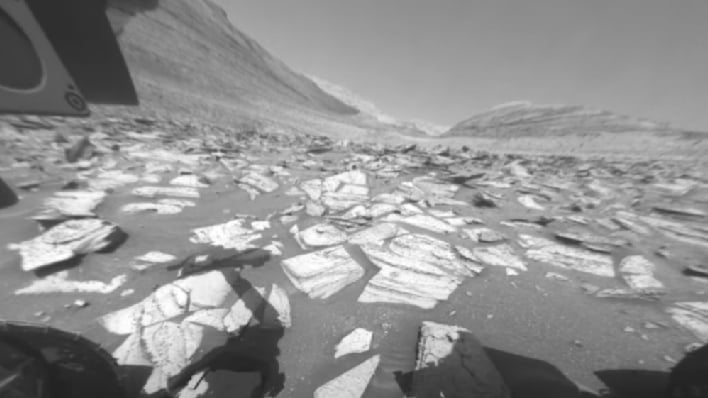See A Full Day On Mars Squished Into 10 Seconds From NASA’s Curiosity Rover

The two black and white videos of the 4,002nd Martian day, or sol, of Curiosity’s mission each last just over 10 seconds each. NASA reported it sent the instructions to record the videos as a last set of commands beamed up to the rover before the start of Mars solar conjunction, which is a period when the Sun is between Earth and Mars. During the conjunction, communication with the rover can be spotty because of plasma from the Sun interfering with radio communications. The team hoped that by recording the two twelve-hour videos, they would capture clouds or dust devils that could give them more data about the Red Planet.
While neither video showed anything of significance, both videos give a glimpse into what a day on Mars for Curiosity looks like. The pair of 25-frame videos include the time between 5:30am to 5:30pm local time, and show Curiosity’s silhouette moving along as the day progresses. The front Hazcam is directed toward the southeast along Gediz Vallis, a valley on Mount Sharp. NASA says that the rover has been ascending the base of the 3-mile-tall mountain since 2014.
The video from the rear Hazcam looks toward the northwest down the slopes of Mount Sharp to the floor of Gale Crater. In the video, the rear wheel of the rover can be viewed , along with the shadow of Curiosity’s power system. During the 17th frame of the video, a small black artifact can be seen at the left of the screen. NASA reported that this resulted from a cosmic ray hitting the camera sensor. The bright flashing and other noise result from heat from the rover’s power system affecting the Hazcam’s image sensor.
NASA remarked the images of the twelve-hour time period captured by Curiosity’s two Hazcam cameras were re-projected in order to correct the wide-angle lenses of the Hazcams. It added that the speckled appearance of the images produced was due to 11 years of Martian dust collecting on the lenses.

